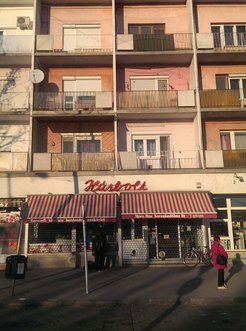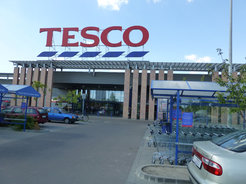Postsocialist moral economy in a patriotic Christian nation
Author: Luca Szücs
April 14, 2016
On the national holiday of 15 March, Hungarians commemorate the Hungarian revolution of 1848 in which the Hungarian Kingdom fought for its independence from the Austrian-Habsburg Empire. The political events and cultural production of this revolution constitute the very first chapters of the Hungarian nationalism. Therefore on this occasion public ceremonies and remembrances are hold throughout the whole country, including in my field-site, Szeged. On that day this year I attended the official ceremony of Szeged, which took place in the Klauzál square in front of the statute of Lajos Kossuth – the governor of the Kingdom of Hungary during the revolution of 1848–49. After listening to local actors reciting poems of Sándor Petőfi and singing the national anthem, the keynote speaker of the ceremony – a politician of the Hungarian Socialist Party – invoked the famous 19th century rabbi of the city, Lipót Lőw’s (1811–1875) words about the Szegedi people in his speech. The rabbi described the Szegedi folks as “ardent patriots, who appreciate human dignity, civil liberties, independence more than calmness and leisure”.
I am fully aware that sentences like this cannot be understood without unpacking its historical and political context and taking into account Lipót Lőw’s role in the Hungarian revolution and his political agenda of promoting Jewish assimilation. Still, his words brought to mind the present day self-representations of local business owners and workers in Szeged. Therefore his characterization of Szegedi people can serve as a springboard for introducing my field-site and my research themes. Based on the data that I have gathered so far by conducting interviews with small business owners and workers as well as doing participant observations in a workplace and in business related gatherings, I will give a broader picture of small businesses and of various strategies people follow to make a living and to make ends meet in Szeged.
Szeged is the third largest city of Hungary, with a population of 161.921. It is the largest city and regional center of the Southern Great Plain and the county town and cultural center of Csongrád county. Moreover, it is doubly a border city, given its proximity to the Serbian and Romanian borders. Regarding the cultural traditions and ‘moral background’ of the city in terms of religion, some 39,3% of the local population, described themselves as Roman Catholic. Besides this, 7% declared themselves Calvinist, 0,8% Lutheran, 0,4% Greek Catholic, 0,1% Jewish, 23,3% described themselves as atheists according to the last (2011) census data.

Szeged was largely reshaped by the great flood of 1879 so the present-day structure and appearance of the city center date primarily from the end of the 19th century and the beginning of the 20th century. At that time the economy was mainly based on agriculture, together with food processing and light industry. Moreover, huge effort was put into the development of the cultural and educational sector that resulted in the establishment of the university in 1921. After the Second World War, the modernization of the city was continued under socialism by restructuring the local economy and the city itself. As industrial development gained priority in the 1950s and 1960s, new districts were built up for the burgeoning working class; however the region of Szeged and the county of Csongrád remained predominately agrarian. Afterwards, in the 1970s and 1980s, there was a shift toward the service and tertiary sector in the economy and due to the quite prestigious university of Szeged, which was (and still it is) especially strong in hard sciences, the research and development (R&D) sector became very significant, with a particular focus on biotechnology and chemistry. Following the regime change of 1990, rapid privatization and the large scale restructuration of local economy took place in Szeged. The construction and textile industry collapsed while the food industry went through hard times, resulting in massive and long term unemployment in the beginning of 1990s.


Nevertheless, unlike those parts of the country where heavy industry and mining played a significant role in the economic development during the Socialist period (eg.: Ózd, Komló, Salgótarján, Miskolc-Diósgyőr), Szeged and the county of Csongrád has never become a crisis-ridden region. Nowadays, the biggest employers of Szeged are the local government and the universities while its main sector is the service sector. The county of Csongrád and Szeged particularly are regarded as unusual in the sense that the density of small enterprises and entrepreneurial activities are the second highest in the country, after the region of the capital city, Budapest. Put another way, the number of micro- and small size enterprises in Szeged and in its regions is higher than in other Hungarian cities with similar profile. This fact usually explained by two reasons in the literature. The first, the so-called “cultural” reasoning, argues that the prevalence of entrepreneurship is rooted in the agricultural/ gardening entrepreneurial activities of the past and peasant culture of the region (Kuczi 2000). The second reasoning emphasizes the significance of the geographical location by arguing that the high level of entrepreneurial activities is mainly triggered by the commercial possibilities enabled by the proximity of Serbian and Romanian borders.
While not denying the importance of the above mentioned factors, by unpacking family-owned business histories and the various material life conditions of my informants, my research will contribute to the understanding of the connection between individual attributes and the various, economically important institutional-structural and cultural factors that shape people’s opportunities and their choices how to make a living. The small businesses that I’ve encountered during my fieldwork so far cover a wide range so I have simplified by grouping them in three clusters according to the nature of their capital/property.
The first group consists of those businesses that were established in the beginning of the 1990s or immediately after the regime change and which have their roots in socialist big companies. I mean this in the sense that former employees of big companies launched their new businesses by successfully transferring the relevant experiences, knowledge, and social capital that they accumulated previously to their new businesses. These – mainly family owned – businesses successfully survived the various hardships of the past 25 or more years and could grow bigger in size (having employers between ten and fifty). These are what I would call the “rational” enterprises, here mainly referring to the owners’ accounts of the business related matters and decisions.
However, the majority of the enterprises are microenterprises in my sample (having fewer than 10 employees). These constitute the second group of businesses. Starting with the investment of a minimum of capital, they primarily draw on the labour of their families and relatives, and manage by successfully adjusting and transforming the social network of the owner according to the needs of the business. Given the lack of capital and the structural and institutional constraints on small businesses, owners of such companies do not plan to become bigger ones; they only aim to make enough profit to have a self-sufficient business and to maintain a nuclear family. In relation to the question of capital, risk avoidance is a salient characteristic of these microenterprises. As one of my informants put it, “look, I have been eating the bitter bread of Hungarian entrepreneurs for 26 years now, but I’ve never ever taken a risk in business, I only ventured as much as I could handle. I never invested millions (of money) and never took a loan and I am absolutely fine. Maybe, if I had taken a bigger risk in terms of investing more money, I would have had twice or three times or perhaps 10 times the fortune that I have now, but that would not be certain.”
The third group consist of businesses that are successfully integrated into the world of national and EU tenders, by creating a system in which these sources are used as financial capital for starting a new business or developing an existing one. This way of using tenders creates disembedded and sometimes badly functioning businesses where the entrepreneur’s perceptions and decisions are distorted by non-market signals that might be compared to the inefficiencies of socialist central planning.
Running two or three different small businesses at the same time or being employed in a formal job and supplementing it with entrepreneurial or household activities is also a very prevalent way of making ends meet and avoiding risk in businesses. This system of having more than one job and doing more than one shift per day eerily invokes Ferenc Erdei’s account of the Szegedi working class from the 1970s and the widespread practice of having a “formal” and an “informal” job at the same time under the Socialist period (Erdei 1977).
Although the people I have met and interviewed with built their businesses under very different material conditions, they share almost the same self-representations of themselves: “ardent patriots, who appreciate human dignity, civil liberties, independence more than calmness and leisure”. In my research, by focusing on family businesses, I aim to understand the material conditions and structural context of these and similar long-standing self-representations, values and concepts.
References
Erdei, Ferenc. 1977. Város és Vidéke. Budapest: Akadámiai kiadó.
Kuczi, Tibor. 2000. Kisvállalkozás és társadalmi környezet. Budapest: Replika Kör.


